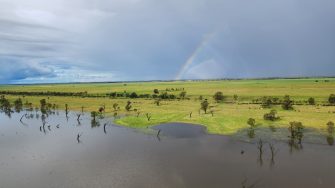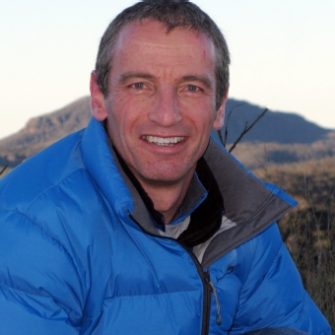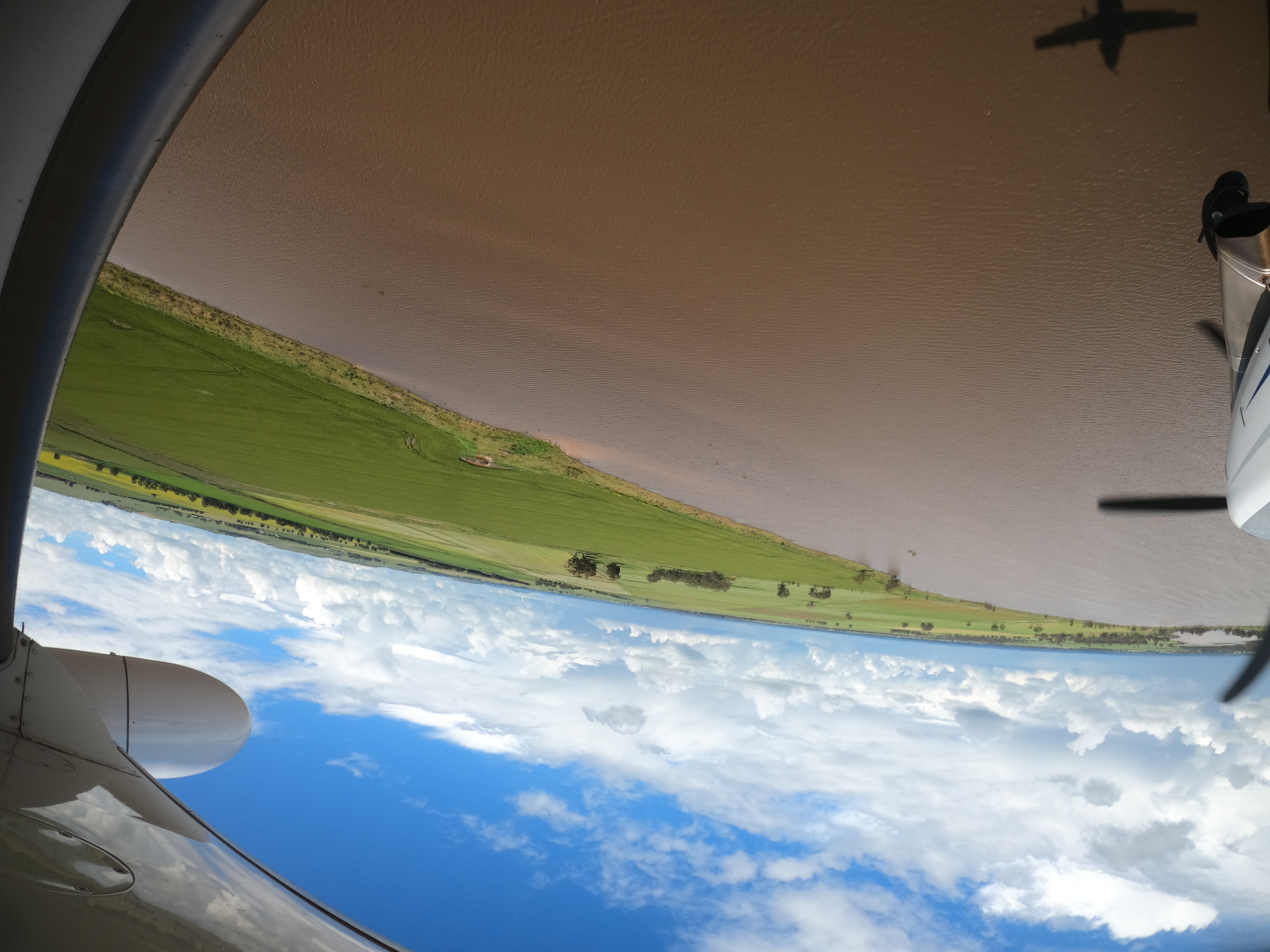
Date: Tuesday October 25th 2022
Project: Eastern Australian Waterbird Survey
Observers: John Porter & Heath Dunstan
Pilot: Alex Katopodis
Our week does not get off to a good start! A group of low pressure systems swirling over the continent ensure that our planned departure on Monday is delayed. Weather reports confirm that parts of south-eastern Australia have had their wettest October on record. Tuesday's departure is delayed for a few hours as we wait for the weather to clear. Finally we opt to do our planned route in reverse hoping to beat the bad weather. Departing Sydney, we head for Albury and turn west along Survey Band 2.
Trying to stay ahead of the bad weather.
First up are the Kiewa, Oven and King Rivers, all in flood with water inundating large parts of their floodplains and replenishing billabongs, wetlands and waterholes. Straw necked Ibis, egrets, herons and wood ducks are present in low numbers.
Next up we count over Lake Mokoan with shallow floodwater providing habitat for moderate numbers of Black Swans, Grey Teal, Straw Necked Ibis, herons and Wood Ducks. The lake was created in the seventies by impounding water in a natural wetland to store water for irrigation. The new reservoir killed around 200,000 red gums including many aboriginal scar trees. Long dry periods and the recognition that the shallow reservoir lost far more water to evaporation than it contributed to irrigation led to it being decommissioned. The water that would have been stored in the reservoir now contributes to environmental flows in the Murray-Darling river system.
In contrast Waranga Basin Reservoir with much deeper, turbid water supports low numbers of waterbirds – mainly comorants, pelicans and terns.
Counting over Waranga Basin near the dam wall.
Counting over Waranga Basin.
Further west The Wallenjoe wetlands are almost all full but the densities of birds are low – with low numbers of Black Swans, Mountain Duck and Grey Teal. Black Swan are breeding with a number of nests and broods sighted.
Surveying Lake Cooper.
Lake Cooper.
Lake Buloke has started to fill for the first time in years – but waterbird numbers are also low here as the birds are spread out across huge amounts of available habitat. As we fly over the lake we can see large number of carp in the shallow organic stained water.
Lake Buloke.
We continued counting to west of Nhill where poor weather and low light encouraged us to stop for the day and head for Naracoorte.


